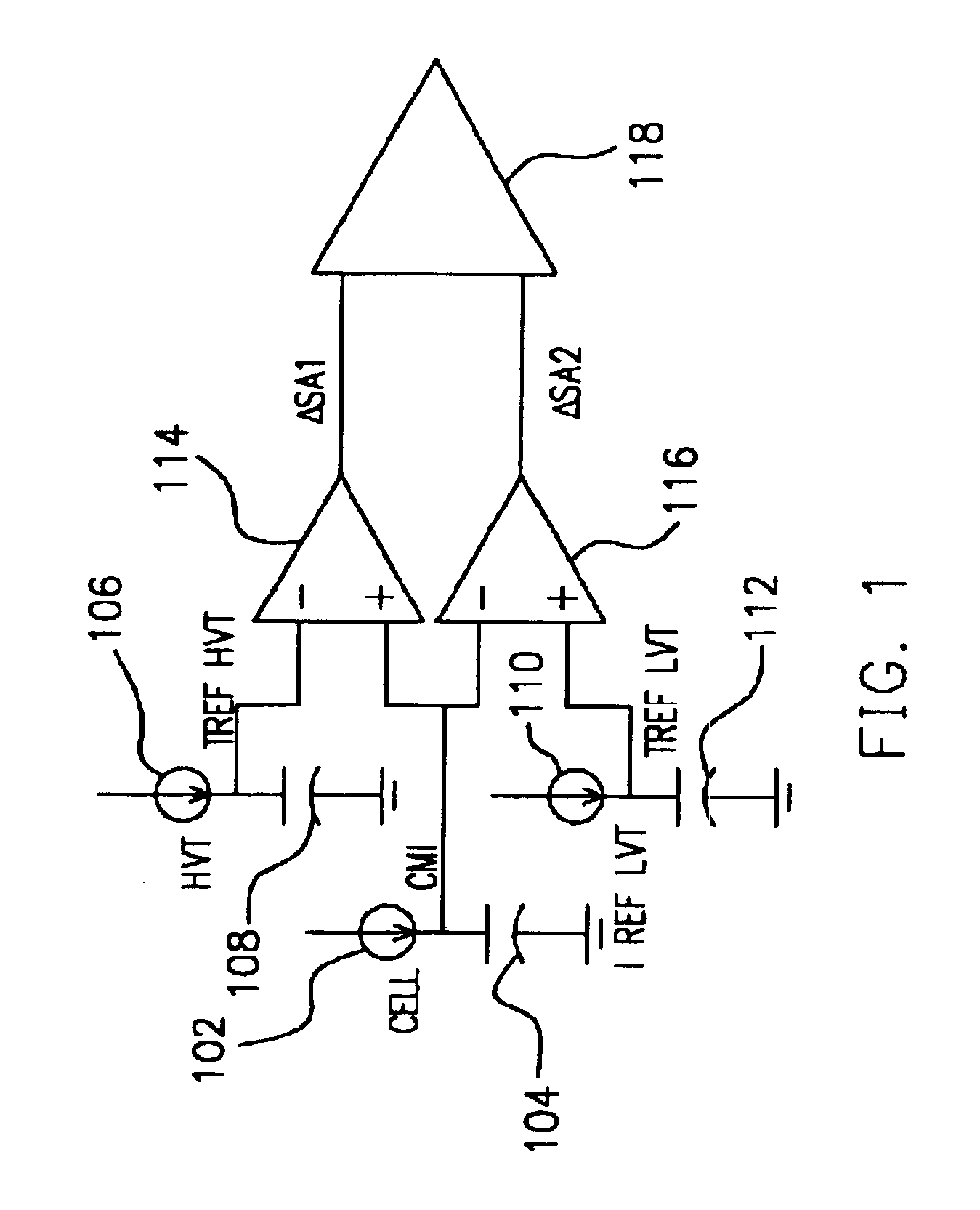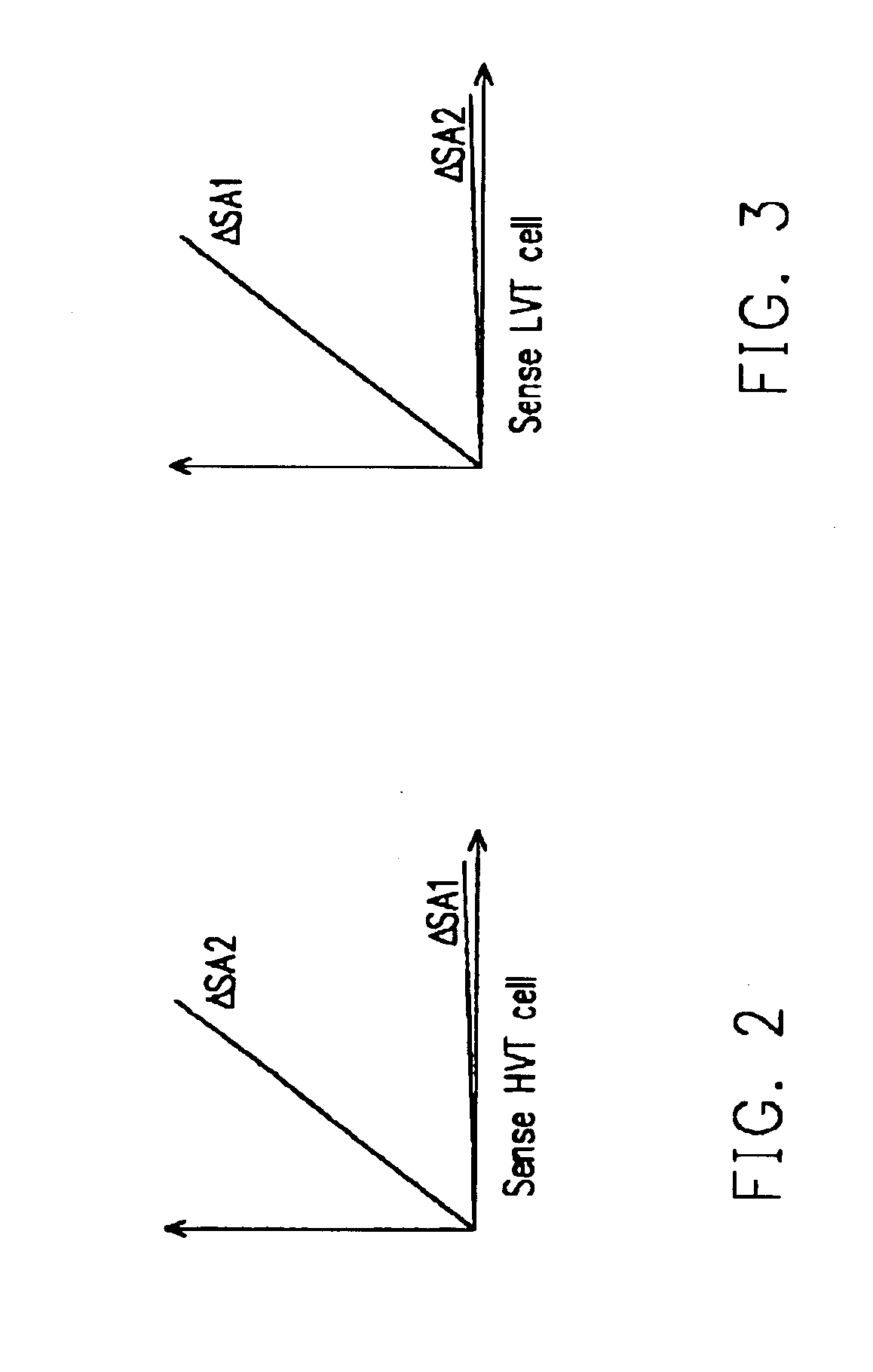Dual reference cell sensing scheme for non-volatile memory
a non-volatile memory and sensing scheme technology, applied in the field of non-volatile memory devices, can solve the problems of inaccurate, high cost of dummy cell methods and trimming methods used in the prior art for setting reference cells, and achieve the effect of high read speed non-volatile memory
- Summary
- Abstract
- Description
- Claims
- Application Information
AI Technical Summary
Benefits of technology
Problems solved by technology
Method used
Image
Examples
Embodiment Construction
FIG. 1 shows a dual reference cell sensing scheme of a preferred embodiment of the present invention. Reference numerals 102, 106, and 110 represent current sources from a memory cell (CELL in the FIG. 1), a high voltage (HVT) reference cell, and a low voltage (LVT) reference cell respectively. The current sources 102, 106, and 110 are connected to capacitors 104, 108, and 112 respectively. The capacitors 104, 108, and 112 are used for holding the charges from the current sources 102, 106, and 108 until it reaches a required level. The current source 102 of the memory cell sends out a signal CMI through a common node to a positive input of a sense amplifier 114 and to a negative input of a sense amplifier 116. A signal TREF HVT from the high voltage reference cell is sent to a negative input of the sense amplifier 114. A signal TREF LVT from the low voltage reference cell is sent to a positive input of the sense amplifier 116. The signal CMI is individually compared to the signal TR...
PUM
 Login to View More
Login to View More Abstract
Description
Claims
Application Information
 Login to View More
Login to View More - R&D
- Intellectual Property
- Life Sciences
- Materials
- Tech Scout
- Unparalleled Data Quality
- Higher Quality Content
- 60% Fewer Hallucinations
Browse by: Latest US Patents, China's latest patents, Technical Efficacy Thesaurus, Application Domain, Technology Topic, Popular Technical Reports.
© 2025 PatSnap. All rights reserved.Legal|Privacy policy|Modern Slavery Act Transparency Statement|Sitemap|About US| Contact US: help@patsnap.com



